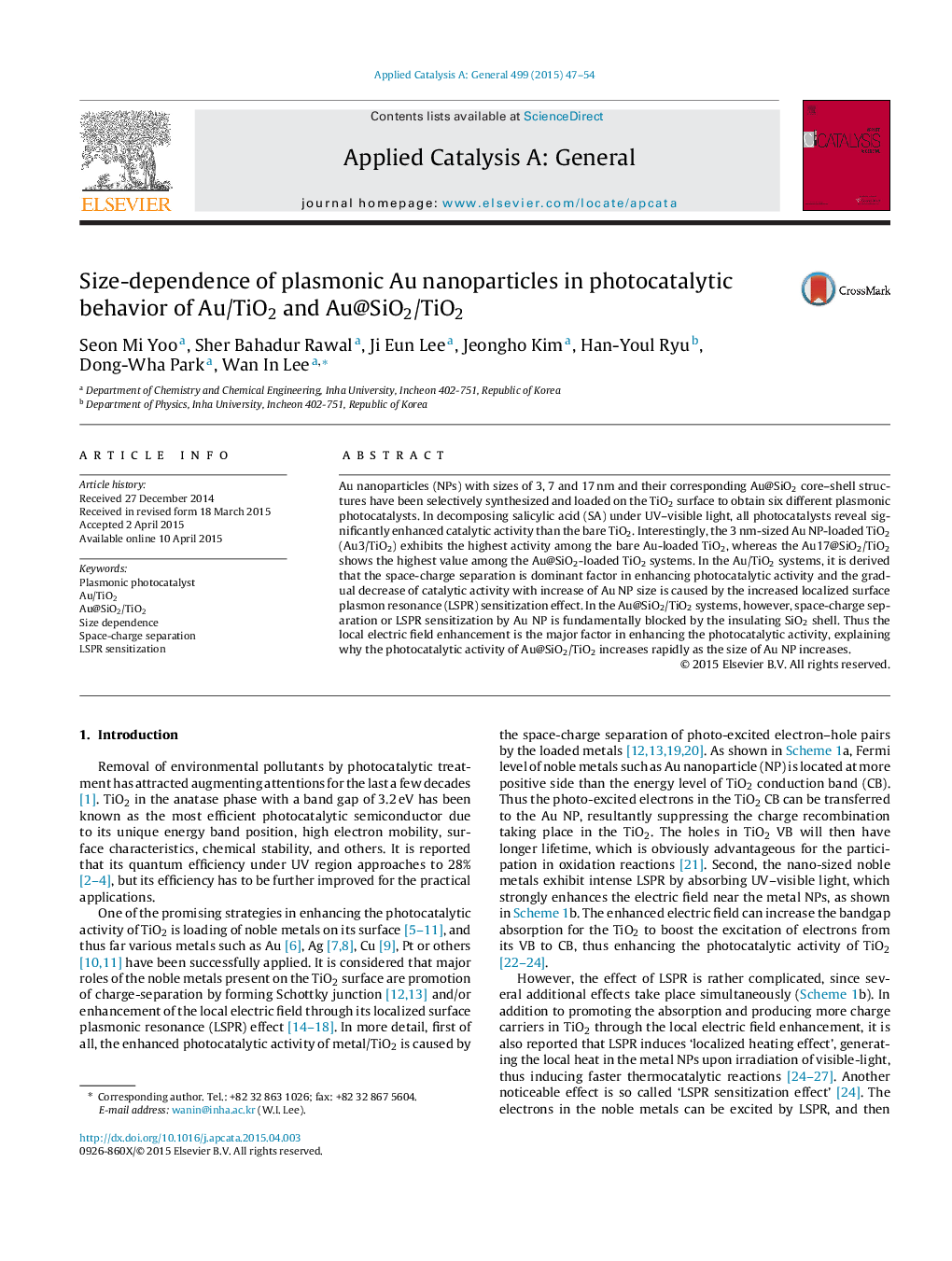| کد مقاله | کد نشریه | سال انتشار | مقاله انگلیسی | نسخه تمام متن |
|---|---|---|---|---|
| 39185 | 45812 | 2015 | 8 صفحه PDF | دانلود رایگان |

• 3, 7 and 17 nm-sized Au and Au@SiO2 NPs were selectively synthesized.
• Photocatalytic activities of the various Au/TiO2 and Au@SiO2/TiO2 were analyzed.
• Au17@SiO2/TiO2 demonstrated the highest photocatalytic activity.
• Size-dependent LSPR effects in the photocatalytic reaction were investigated.
Au nanoparticles (NPs) with sizes of 3, 7 and 17 nm and their corresponding Au@SiO2 core–shell structures have been selectively synthesized and loaded on the TiO2 surface to obtain six different plasmonic photocatalysts. In decomposing salicylic acid (SA) under UV–visible light, all photocatalysts reveal significantly enhanced catalytic activity than the bare TiO2. Interestingly, the 3 nm-sized Au NP-loaded TiO2 (Au3/TiO2) exhibits the highest activity among the bare Au-loaded TiO2, whereas the Au17@SiO2/TiO2 shows the highest value among the Au@SiO2-loaded TiO2 systems. In the Au/TiO2 systems, it is derived that the space-charge separation is dominant factor in enhancing photocatalytic activity and the gradual decrease of catalytic activity with increase of Au NP size is caused by the increased localized surface plasmon resonance (LSPR) sensitization effect. In the Au@SiO2/TiO2 systems, however, space-charge separation or LSPR sensitization by Au NP is fundamentally blocked by the insulating SiO2 shell. Thus the local electric field enhancement is the major factor in enhancing the photocatalytic activity, explaining why the photocatalytic activity of Au@SiO2/TiO2 increases rapidly as the size of Au NP increases.
Figure optionsDownload high-quality image (153 K)Download as PowerPoint slide
Journal: Applied Catalysis A: General - Volume 499, 25 June 2015, Pages 47–54